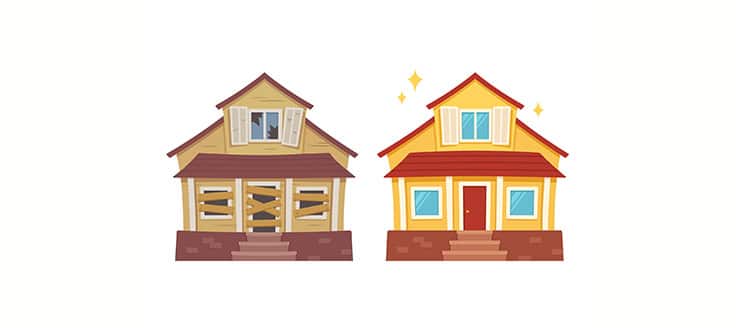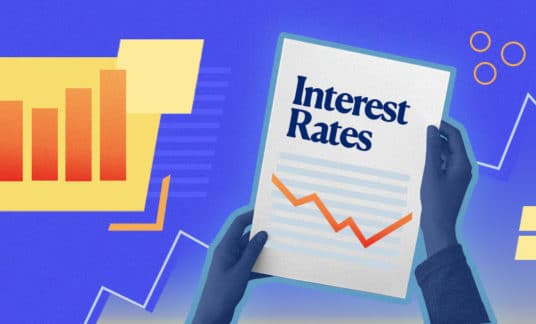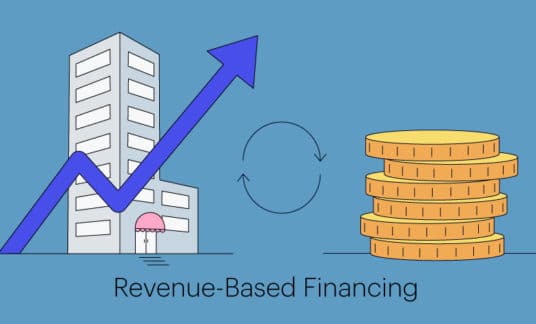In the past decade, television shows such as “Fixer Upper” and “Love It or List It” have permeated American culture and brought greater awareness to the potential profit in home renovations.
It may look like fun to fix up old homes, but there’s a lot more that goes into property investment—especially when it comes to financing.
What Is an Investment Property Loan?
An investment property loan is funding that is collateralized by a piece of real estate that is being purchased or renovated as an investment.
These loans are secured by the investment property and may include funding for acquisition, legal and other professional fees, construction and project management.
These loans are typically more expensive than conventional 30-year mortgages and are tailored to suit individual investments.
Types of Investment Property Loans
If you’re trying to finance an investment property, there are 5 main types of real-estate investment loans to be aware of:
1. Rental Property Loans
If you’re buying an investment property that you plan to lease out to renters for ongoing income, then you definitely should consider a rental investment property loans. These loans typically have some of the lowest investment property loan rates available.
While the rates tend to be attractive on these loans, they often have higher down-payment requirements than other financing options available. Still, these loans are especially attractive for income-producing properties such as retail centers, making them ideal commercial property investment loans.
2. Fix-and-Flip Loans
If you have some experience flipping homes and want to start borrowing to do more deals, a fix-and-flip loan may be a good option. These loans often include funds to help cover construction costs and may even help with holding expenses while you improve the property.
Most of these loans are based on after renovation value (ARV), so be sure that you’ve run the numbers on your project before applying.
3. Bridge Financing
Sometimes a deal comes along and an investor has to pounce to take advantage of the opportunity. If you have sound credit and know that you can qualify for long-term financing at attractive rates but need short-term financing quickly, bridge financing may be a good option for you.
As with fix-and-flip loans, bridge financing typically involves higher interest rates than typically rental property loans, but this is a real estate investment financing tool that’s designed to be paid back quickly—as soon as you get your long-term financing in place.
4. Hard Money Loans
If you’re looking for a bad credit option for investment property loans, a hard money loan may be just what your business needs. These loans aren’t cheap, but they’re easy to qualify for and get you financing very quickly.
If you don’t have great credit but need financing fast, hard money loans can typically help with nearly any type of real-estate investment. These aren’t typically long-term loans but can give you 12-24 months to work out long-term financing.
5. Investment Property Lines of Credit
If you’re a real-estate investor who is trying to build up a portfolio of holdings or take on new projects, a line of credit may be just the financings you need.
Using a line of credit, you can borrow against properties that you already own— and typically at fairly attractive rates. You need to own your investment property outright, or at least have excess equity in the property, for a line of credit to be an option.
Investment Property Loan Rates
If you’re looking to borrow money to buy or renovate an investment property, you should expect to pay higher interest rates than you would pay on a conventional home mortgage. This is because investment property loans aren’t packaged and sold off the way home loans are.
Instead, banks often hold these loans on their books. As a result, they typically charge higher interest and may have additional qualification requirements.
Current investment property mortgage rates typically start around 5%. However, this rate will only be available for the most creditworthy borrowers who are making down payments of 25% or more.
If you don’t have excellent credit or a substantial down payment, you should expect to pay a higher rate. Some investment property loans—particularly those that let you qualify online and get funding fast—often charge 10%-12% or more a year and are only available for 2-5 years.
Investment Property Loan Requirements
To secure a property loan, your financial profile needs to be a bit stronger than it would be for business financing or a personal home mortgage. Lenders typically want to see that you have a credit score of at least 620 and that you have a minimum of 6 months of cash reserves for each property you own and any you intend to invest in.
You may also need to present a pro forma for your project as well as an estimated value of the property after renovations are complete.
How to Get a Loan for an Investment Property
Applying for an investment property loan is consistent across the board, regardless of the type of lender you’re working with. Here are the 3 steps you’ll take to secure an investment property loan:
1. Getting Pre-Approved
Before your business is approved for an investment property loan, you must first gather and submit the necessary financial and employment records and submit them to your lender.
The lender will then verify and evaluate your documents along with checking your credit score to determine how much you qualify for.
Here are the documents you likely can expect your lender to ask you to provide:
- 2 years of personal tax returns
- Property appraisal
- Purchase property contract
- Copies of leases (for all rental properties you own)
- Recent mortgage statements (on all properties you own)
- Proof of insurance (for all properties you own)
Whether you’re working with a loan officer or through an online portal, it’s possible to be pre-approved in 5-30 minutes.
2. Underwriting and Approval
Once you’ve gathered and submitted all of the necessary documents, the next step in is finding the best offer for your funding needs. As you’re gathering your documentation for the first lender, be aware of what your second and third lending partner options require so that you can compare multiple offers at once.
After you’ve found a deal, the lender you choose to work with will begin to underwrite a contract once you make an official offer on a property. An approval is often valid for 30 days, sometimes 90, depending on your lender.
3. Closing
After you’ve been approved and your offer has been accepted by the seller, you’ll move into the closing process. It’s common for these loans to close in about 30 days, during which time the property will be appraised.
It also is possible that your lender will ask for additional documents to either verify or support any questions they or the seller may have.
The 6 Steps You Need to Take Before Applying for an Investment Property Loan
Applying for investment property financing typically means you’ve found an investment property that fits your needs. But what does it take to get to that point and find the right property?
Here are the 6 things you need to do or consider before exploring investment property financing:
1. Research Thoroughly
Making an investment in a property is similar to making an investment in a business: Due diligence is a must. You need to identify how the property stacks up to others in the area, who it will appeal to, its overall potential and the profits you stand to earn.
Remember, you aren’t looking to invest in the property you like the most: You’re looking to back the property with the most potential with the highest upside.
2. Handle Your Debts
Before adding another debt to your financial roster, it’s best to pay off or consolidate any other personal liabilities in your name. These include student loans, medical bills and any other significant debts aside from your mortgage.
By limiting the number of debts you have to manage, especially if this is your first investment property, your chances of maintaining regular payments increase dramatically.
3. Secure a Down Payment for Your Investment Property
Lenders typically want investors to provide at least 20% or more of the total purchase price for investment properties. The reason for this is because most lenders keep investment property loans on their books, rather than selling them off. If a borrower defaults, the lenders have to try to recoup their borrowed money by selling the property.
Having higher down-payment requirements gives the lender a cushion and makes it more likely that they’ll recoup their money if the borrower goes bust.
4. Do the Math Ahead of Time
Considering every financial aspect of the property before you take the steps to apply for funding makes life much easier for you and your future lending partner.
Beginning with the capital you already have set aside to invest, and then estimating what you’re eligible to borrow, calculate both what you qualify for and what you feel comfortable spending. Using these numbers, project the cost of buying and updating the property you intend to make an offer on as well as the monthly operating costs.
Once you’ve estimated those totals, determine the price you plan to list the property at for resale or lease.
5. Think Low Risk, High Reward
Now that you’ve estimated your ideal and maximum budget, you’re ready to consider properties in your price range. It’s best to invest in properties that are in the lower to midrange tier of your budget.
You’ll need to make additional investments in the property after closing to prepare it for renters or post-renovation buyers. The lower your investment costs, the easier it’ll be for you to reach your profitability goals.
6. Choose Investment Partners Wisely
Potential investors need to evaluate many factors that go into a partnership, such as the language of an agreement or the level of comfort you have with either a fellow financial backer or a lending company.
The appeal of working or partnering with friends on an investment opportunity can be very strong. However, it isn’t always the shrewdest business decision to mix your personal life with your professional dealings. It isn’t just about protecting your relationship: It’s very much about protecting your investment.
Conclusion
Making a property investment is inherently risky.
The best way to protect yourself and your assets from the downsides of investing is to do as much research as possible while also making the safest bet you can.












